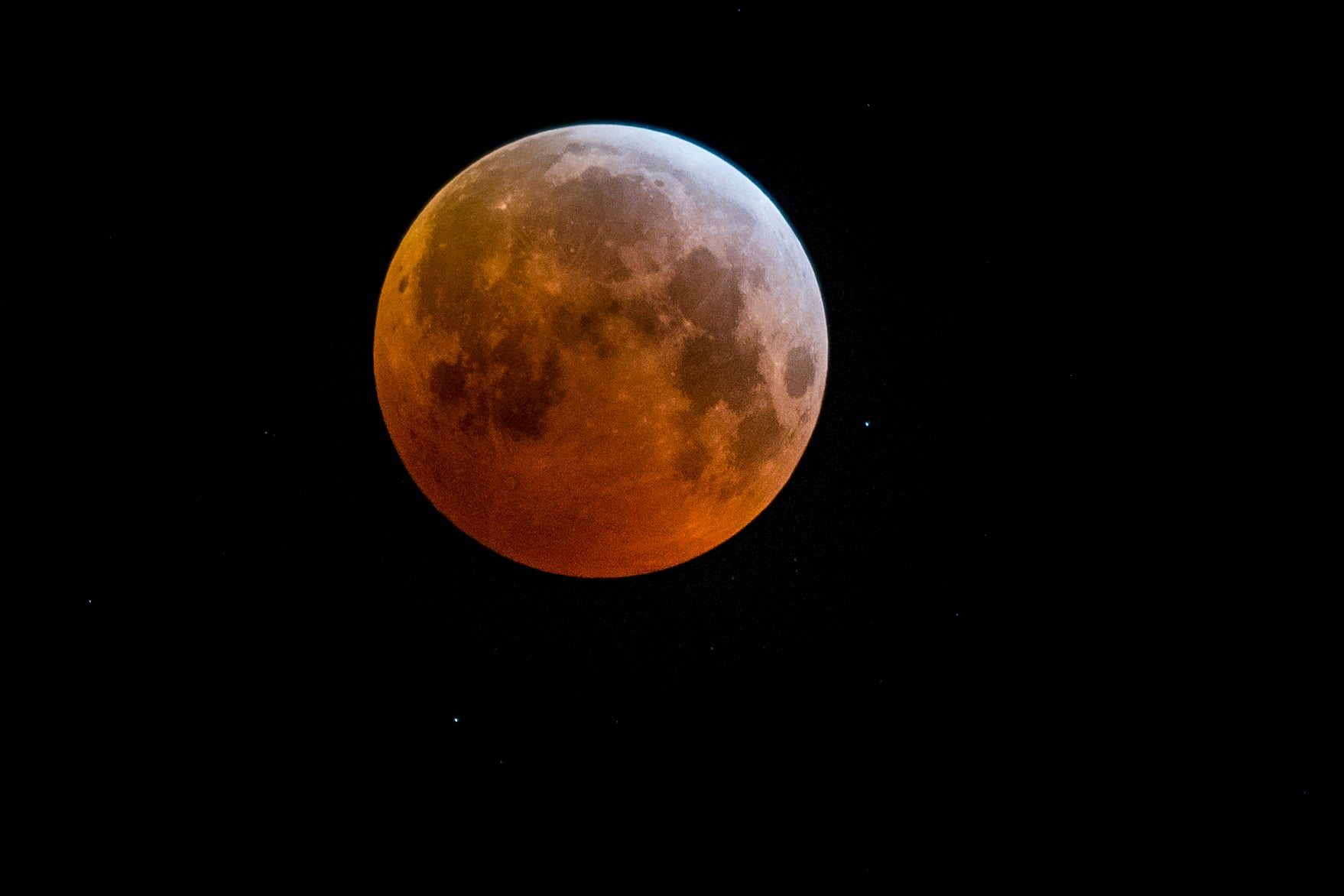Lunar eclipse: How to see rare celestial event in Asia and America
People living in North America, eastern Asia and western South America will have best view, Nasa noted

Your support helps us to tell the story
From reproductive rights to climate change to Big Tech, The Independent is on the ground when the story is developing. Whether it's investigating the financials of Elon Musk's pro-Trump PAC or producing our latest documentary, 'The A Word', which shines a light on the American women fighting for reproductive rights, we know how important it is to parse out the facts from the messaging.
At such a critical moment in US history, we need reporters on the ground. Your donation allows us to keep sending journalists to speak to both sides of the story.
The Independent is trusted by Americans across the entire political spectrum. And unlike many other quality news outlets, we choose not to lock Americans out of our reporting and analysis with paywalls. We believe quality journalism should be available to everyone, paid for by those who can afford it.
Your support makes all the difference.In a rare coincidence, Wednesday’s full moon will be brighter and larger than usual, as well as appear rusty red in colour across some parts of the world due to a total lunar eclipse.
According to Nasa, the eclipse starts at 4:47 a.m. EDT (08:47 a.m. GMT) and enters the total phase at 7:11 a.m. EDT (11:11 a.m. GMT).
In parts of South/East Asia, the eclipse will be partially visible, and is expected to start in India at 2:16 pm IST and between 4:41 pm IST to 4:56 pm IST, the surface of the moon will be completely covered by Earth’s shadow.
People living in western North America, eastern Asia and western South America, will have the best view of the “Blood Moon,” Nasa noted.
The US space agency said people in most of South and Central America, including Mexico, Ecuador, western Peru, and Argentina, as well as parts of Oceania including eastern Australia, New Zealand, and the Pacific Islands can also witness the eclipse in its entirety.
And during the lunar eclipse – when the Moon passes completely through the Earth’s dark shadow – the Moon will gradually get darker, taking on a rusty or blood-red colour, the agency said.
“Folks in Hawaii and the Aleutian Islands will get to see the entirety of this eclipse – it will be quite a show for them,” said Bill Cooke, Lead, Nasa Meteoroid Environments Office.
According to the space agency, North America hasn’t had a total lunar eclipse occur with a supermoon in almost six years, and the next total lunar eclipse would not happen over the continent until May 2022.
This also marks the first lunar eclipse of the decade with a partial one expected later this year on 19 November.


Join our commenting forum
Join thought-provoking conversations, follow other Independent readers and see their replies
Comments